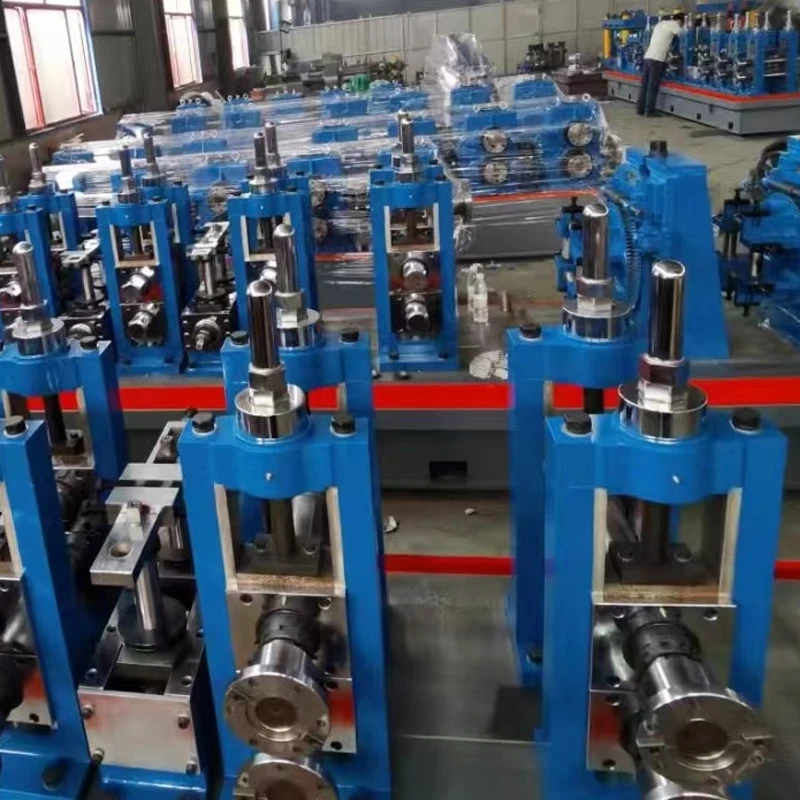Innovative Solutions for Shearing and Punching Machinery in Modern Manufacturing
Understanding Shear and Punch Machines Essential Tools in Modern Manufacturing
In the world of manufacturing, the efficiency and precision of metal fabrication play critical roles in producing high-quality products. Among the essential equipment utilized in this domain are shear and punch machines. Both machines significantly contribute to shaping materials, particularly metals, by cutting and perforating them into desired forms.
Shear Machines Precision Cutting Made Easy
Shear machines are designed to cut materials using a shearing force. This force is applied to the material, which is positioned between two blades. As the top blade moves downward, it applies sufficient pressure to cut through the material, providing straight cuts and precise edges. This process is fundamental in industries dealing with sheet metal, where accuracy is paramount.
These machines come in various forms, including hydraulic, mechanical, and pneumatic shears. Hydraulic shears, for instance, utilize hydraulic power to perform cuts with incredible force and accuracy. They are ideal for thick materials, making them ideal for heavy industrial applications. Mechanical shears, on the other hand, use a system of gears and pulleys to create cutting force, appealing to environments with lighter cutting needs.
Shear machines have evolved significantly over the years. Modern capabilities often include programmable controls that allow for automated and precise cutting operations, reducing waste and increasing productivity. Furthermore, advancements in blade technology have led to longer-lasting and sharper blades, resulting in cleaner cuts and enhanced material handling.
Punch Machines Creating Holes with Precision
In contrast to shear machines, punch machines are specifically designed for perforating materials, primarily sheet metal. A punch machine utilizes a punch and die system where a punch tool is forced through the material to create holes of specific shapes and sizes. This method is not only efficient but also helps maintain the integrity of the surrounding material, as it reduces the risk of deformation.
shear and punch machine

Punch machines come in various configurations, including mechanical and hydraulic types. Mechanical punch machines rely on a flywheel mechanism and are suitable for high-speed operations. In contrast, hydraulic punch machines provide more control over the punching process and are ideal for thicker materials, allowing for more complex shapes and deeper cuts.
The versatility of punch machines allows manufacturers to create a range of products, from simple holes to intricate designs, facilitating the production of components such as brackets, plates, and enclosures. With the introduction of CNC (Computer Numerical Control) technology, punch machines can now be programmed to execute multiple operations, enhancing productivity and minimizing downtime.
Integration in Manufacturing Processes
Both shear and punch machines play complementary roles in the manufacturing process. Often, materials are first sheared to size and then punched to create specific cutouts or features. This integrated approach optimizes workflow, ensuring that parts are produced quickly and accurately.
Moreover, safety remains a significant concern when operating shear and punch machines. Manufacturers are increasingly adopting automatic feeding systems and safety guards to minimize the risk of accidents, ensuring that operators can work efficiently without compromising their safety.
Conclusion
In conclusion, shear and punch machines are vital tools in the manufacturing landscape, enabling precise cutting and perforation of materials with efficiency and accuracy. Their ongoing evolution, coupled with technological advancements, continues to enhance their capabilities, ensuring they remain indispensable in modern production environments. As industries strive for greater efficiency and precision, the significance of these machines will undoubtedly continue to grow. Whether in automotive, aerospace, or general manufacturing, understanding how shear and punch machines operate can lead to improved productivity and product quality.
-
High Frequency Straight Seam Welded Pipe Production Line-BzZhou Xinghua Machinery Equipment Manufacturing Co., LTD.|Precision Welding, High EfficiencyNewsJul.30,2025
-
High Frequency Straight Seam Welded Pipe Production Line|BzZhou Xinghua|Precision Welding&EfficiencyNewsJul.30,2025
-
High Frequency Straight Seam Welded Pipe Production Line - BzZhou Xinghua|Precision Engineering&EfficiencyNewsJul.30,2025
-
High-Frequency Straight Seam Welded Pipe Production Line-BzZhou Xinghua Machinery Equipment Manufacturing Co., LTD.NewsJul.30,2025
-
High-Frequency Straight Seam Welded Pipe Production Line-BzZhou Xinghua Machinery Equipment Manufacturing Co., LTD.|Precision Manufacturing, High EfficiencyNewsJul.30,2025
-
High Frequency Straight Seam Welded Pipe Production Line-BzZhou Xinghua Machinery Equipment Manufacturing Co., LTD.|Precision Steel Pipe Manufacturing&Industrial EfficiencyNewsJul.29,2025


